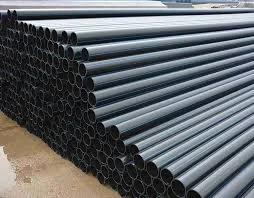Dec . 07, 2024 14:52 Back to list
plumbing pipes and fittings
Understanding Plumbing Pipes and Fittings A Comprehensive Guide
Plumbing is an essential aspect of modern living, playing a vital role in our daily routines. It provides us access to clean water and ensures the proper disposal of waste. At the heart of any plumbing system are the pipes and fittings, which work together to transport water and facilitate drainage. In this article, we will explore the various types of plumbing pipes and fittings, their applications, and the importance of selecting the right materials for your plumbing needs.
Types of Plumbing Pipes
1. PVC (Polyvinyl Chloride) Pipes PVC pipes are among the most commonly used plumbing pipes. They are lightweight, resistant to corrosion, and easy to install. PVC is typically used for cold water supply lines and drainage systems. However, it's important to note that PVC should not be used for hot water applications, as it can warp or degrade when exposed to high temperatures.
2. CPVC (Chlorinated Polyvinyl Chloride) Pipes Similar to PVC, CPVC is a type of plastic pipe that can withstand higher temperatures, making it suitable for both hot and cold water applications. CPVC is often used in residential plumbing for water supply lines due to its durability and resilience against corrosion.
3. PEX (Cross-linked Polyethylene) Pipes PEX pipes have gained popularity in recent years for their flexibility and ease of installation. They can be snaked into walls and around corners without the need for additional fittings. PEX is suitable for both hot and cold water systems and is less prone to bursting in freezing temperatures compared to rigid pipes.
4. Copper Pipes Copper has long been a staple in plumbing due to its longevity and reliability. Copper pipes are resistant to corrosion and can handle high temperatures, making them ideal for both hot and cold water supply lines. However, copper can be more expensive than other options and requires soldering for installation, which can complicate the process.
plumbing pipes and fittings

5. Galvanized Steel Pipes Once a popular choice for plumbing, galvanized steel pipes have fallen out of favor due to their tendency to corrode over time. They are often found in older homes and are primarily used for water supply lines. Although they can last many years, the risk of rust and reduced water flow capacity makes them a less desirable option today.
Fittings The Connective Tissue of Plumbing Systems
Fittings play a crucial role in a plumbing system by connecting different sections of pipes and allowing for changes in direction or pipe diameter. Different types of fittings include
- Elbows Used to change the direction of the pipe, typically in 90-degree or 45-degree angles. - Tees Used to connect three sections of pipe, allowing for a branch line to be created. - Couplings Used to connect two pipes of the same diameter. - Adapters Allow for the joining of two different types of pipes. - Unions Similar to couplings but can be easily detached for maintenance.
Choosing the Right Plumbing Materials
When selecting plumbing pipes and fittings, several factors should be considered, including the type of water supply (cold or hot), the presence of corrosive substances, budget constraints, and local building codes. It is crucial to choose materials that will ensure the longevity and efficiency of your plumbing system.
In conclusion, understanding the different types of plumbing pipes and fittings, as well as their applications, is essential for both homeowners and contractors alike. By selecting the appropriate materials, one can build a reliable plumbing system that will serve its purpose effectively for many years. Whether you are embarking on a DIY project or seeking professional assistance, knowledge of plumbing components is the first step toward a successful installation.
-
Durable PP Rigid Sheet: Lightweight, Chemical Resistant Solutions
NewsAug.21,2025
-
PVC Grey Sheet for Extraction: Chemical Resistant & Durable
NewsAug.19,2025
-
Durable PVC Pipe Fittings for Plumbing & Irrigation Needs
NewsAug.18,2025
-
HDPE Steel Belt Reinforced Spiral Corrugated Pipe | High Strength
NewsAug.17,2025
-
HDPE Pipe Fittings: Durable, Leak-Proof Solutions
NewsAug.16,2025
-
Premium CPVC Sheet: High-Temp & Chemical Resistant Solutions
NewsAug.15,2025

